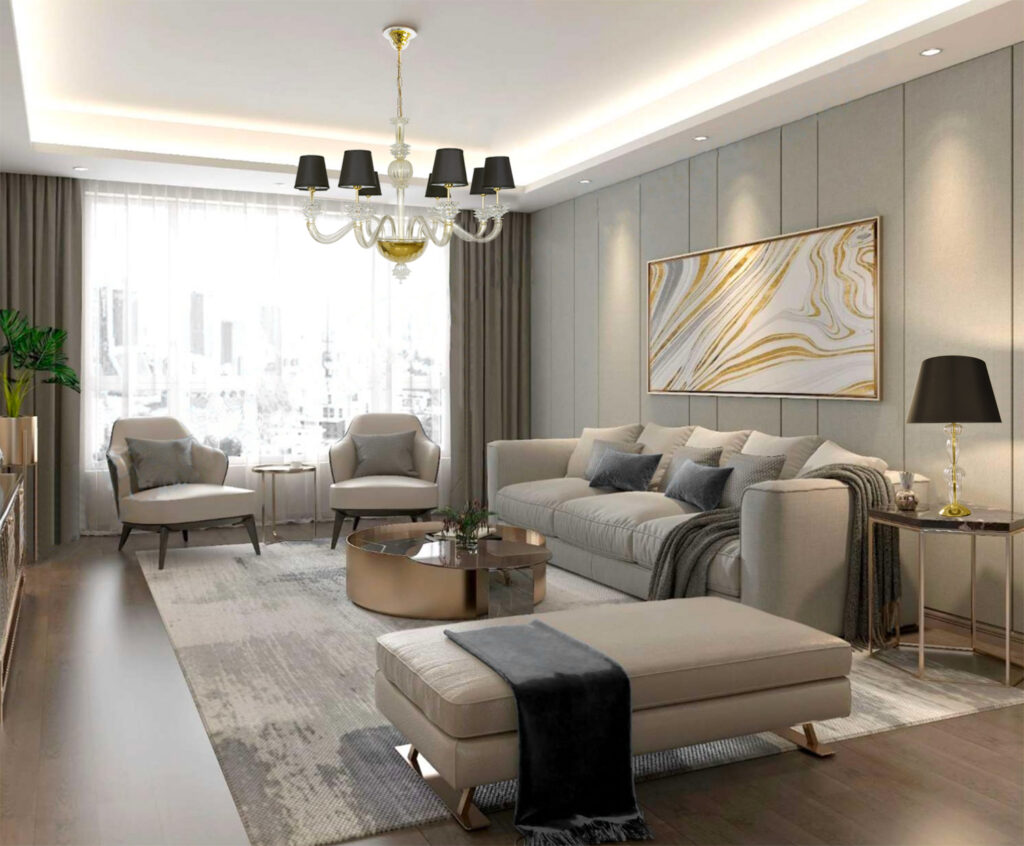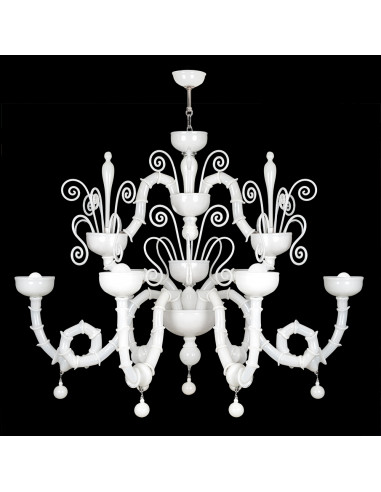
Always able to amaze and enchant, the villas represent homes of extraordinary beauty and refinement.
In this article dedicated to lighting for villas, we will explore how something as crucial as light can completely transform the mood and look of these exclusive residences.
To choose the right interior lighting for a modern villa without making a mistake, you need to rely on a team of professionals who are able to enhance every space thanks to light.
Chandeliers, spotlights, suspensions… various original ideas to illuminate a modern home will be exhibited below.
Enjoy the reading!!
How to light up a villa: the steps to follow
A luxury property must be lit while maintaining high standards from both a scenic and functional point of view.
We must aim to obtain a refinement in the materials which, if skilfully combined, will give a touch of class and improve the livability of the house.
Let’s see what are the steps to follow to illuminate the interiors of a villa, starting from the technical project up to the choice of the best devices according to your needs.
Lighting project
The first step to follow is to get help from a team of professionals, such as architects and interior designers, to develop an efficient and original interior lighting project.

A valid lighting project must, with the help of several figures, enhance the unique characteristics of the house, taking into account the spaces and activities that will take place there, defining, together with the owner, the arrangement of the light points going to illuminate specific areas of the villa.
A good lighting project will certainly take advantage of natural light, high ceilings, generally over 3 and a half meters, and any exposed beams, as they are all fundamental prerogatives to describe a property as a luxury villa.
A villa is also defined as luxury because it is unique in its kind, therefore the lighting project must give the spaces a greater feeling of freedom, elevating aesthetic features such as antique fixtures, frescoes, prestigious parquet, arches or exposed beams.
Villa lighting, how to choose the best
Once the basics of the project have been defined, we move on to which types of lighting to choose, where to position them to make them perform at their best and which style to adopt to obtain stylistic continuity with the furnishings.
What types of lights to choose?
We have already mentioned the importance of natural light.
A modern villa often has a double or triple exposure with large windows that allow the sun’s rays to pass through so as to make the house more illuminated, and therefore more beautiful.

The main advice for lighting a villa is to always use three different types of lighting, avoiding the common mistake of choosing only one level of light:
- Ambient light: light sources that provide illumination to the whole room. The best sources of ambient light are pendant lights for areas such as the kitchen island, chandeliers for high ceiling for the living room, which together with recessed spotlights and wall sconces will provide excellent general lighting.
- Light for activities: corresponds instead to the light sources for smaller areas where a more intense brightness is required for carrying out activities such as cooking, reading or writing. The best light sources for activities are floor lamps, table lamps, and bedside lamps.
- Accent light: they are used to enhance the architectural features of the villa. The best accent light sources include floor spotlights, picture lights, directional lights, and LED strip lights for closet lights.
Which points to illuminate and why?
Lighting up a villa with style will guarantee a level of class and elegance that will leave a very positive memory in the minds of your guests.
The arrangement of the light points in a villa is chosen during the design phase with the architect and will then be created by the electrician. The light must be uniform, but not flat: the convivial areas must be more illuminated than the passageways.

A fundamental component in the choice consists in understanding which activities will take place in each room of the villa, it is obvious that a bathroom has different lighting needs from those of a bedroom.
Once the functionality of the room has been defined, you will have to follow the above and therefore use at least two or three different light sources for each room, so as to guarantee a variety of light sources.
To be sure not to make a mistake, it is advisable to take into consideration the central point of the room, where chandeliers for high ceilings are usually chosen, or for example a light point above the table, and choose the other light points according to the functionality of the environment .
Ceiling lighting
Ceiling lighting, especially for very high ceilings, requires the use of different devices for different lighting.
In addition to the diffused light guaranteed by chandeliers, ceiling or suspension lamps, we will focus on the decorative light, aimed at enhancing the architectural characteristics of the ceiling through light effects.

For this reason, a new trend has developed to illuminate the ceiling using LED strips.
During the design phase, a plasterboard false ceiling is inserted, through which LED strips are inserted that are able to illuminate a ceiling, according to the most disparate shapes.
It ranges from the classic rectangular shapes, along the perimeter of the room, to circular ones, up to the irregular ones according to the most imaginative ideas, so as to allow the ceiling to be decorated in different ways.
How to light corridors
To illuminate the corridor, whether you have a modern villa or a more classic villa, the best choice always falls on wall lamps as a source of ambient light.
The appliques positioned at regular intervals, thanks to their cuts of light, will accompany the path to the other rooms of the villa.

There are many types of appliques, those that emit light both upwards and downwards are very trendy lately, as they allow you to create a chic and refined atmosphere, while furnishing the walls.
Spotlights can be used as a secondary light source, staggered with respect to the alternation of the wall lights, or LED strips in the false ceiling as explained in the previous paragraph.
What style to choose for lighting?

The last tip I want to share is to choose the type of lighting only after having chosen the interior style and furnishings for your villa.
The general visual impact of a house must amaze and make its style understood, whether more classic or more modern. In fact, once the furniture, the available sizes and the colors used have been defined, you can combine them with the lighting devices you prefer.
It will also make it possible to improve the furniture itself, because as much as the interior design may be refined and cared for, only through adequate lighting can all the work done be enhanced.

Here we are at the end of this article…
Setting up the lighting for a villa is an important process, therefore you must contact a team of professionals with experience in the lighting design sector.
Cristalleria Murano ® makes its team of contract experts and interior designers available free of charge. The goal is to create unique and sophisticated lighting solutions, capable of giving each space a distinctive and high-class elegance.
This approach aims to guarantee results of both aesthetic and functional excellence.
CONTACT OUR TEAM FOR A FREE CONSULTATION
Related products

Colorful Venetian luxury, the Carnival Bouquet chandelier is characterized by its bright colours, where the cups and flowers have sweet and delicate shapes typical of the Muranese style.
The important measurements make this chandelier the protagonist of a luxury living room or dining room.

Linear and modern for Àlbore, this design chandelier is enriched by the parts made by our Murano glass masters.
Over 30 lights on 5 levels make up this design masterpiece, the solid steel structure is softened by a clever use of exposed cables.

A unique product of its kind with an almost Baroque style from which it differs however due to the simplicity and naturalness of its forms.
The golden cup supports the arms on whose ends the lampshades are created in two colours: externally black and golden internally.


